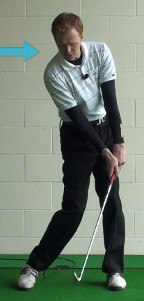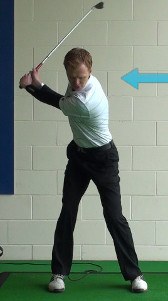
It’s pretty amazing that Sam Snead, Ben Hogan and Byron Nelson were born in the same year, 1912. Even more amazing that Hogan and Nelson were raised in the same neck of the woods, both caddying at Glen Garden Country Club in Ft. Worth, Texas.
Nelson’s swing always carried a reminder of his days hauling bags, a pronounced lowering of the body through impact known as a “caddie dip.” The quirk was anything but a problem; Nelson won 52 tournaments, including five majors, from 1935-51. His remarkable 1945 season, in which Nelson won 11 consecutive events and 18 overall, is considered all but untouchable.
Nelson’s swing may not have matched Snead’s for athletic fluidity or Hogan’s for technical brilliance, but it was so sound that the USGA used Nelson as the model for its “Iron Byron” testing machine. Now that’s consistent.
Nelson’s signature: His body dropped significantly at impact, with Nelson popping back up on the finish.
Who else does it: Many modern players, including Tiger Woods and Yani Tseng, dip on the downswing, but Nelson’s motion was a bit different.
You might think Nelson’s swing was a model of efficiency, but “Lord Byron” actually employed several quirky moves. For instance, his club traveled well inside the conventional arc on the takeaway; his wrists hinged less than others’ on the backswing; the club shaft was “across the line” (pointing right of target) at the top; and his hands came very close to his body as he neared impact.
Nelson’s most notable move, though, was his pronounced motion down and up as the swing bottomed out. This accompanied a huge amount of lower-body drive through the ball, as Nelson’s knees rotated feverishly toward the target.
Why it worked for Nelson: Here’s the thing about Nelson’s idiosyncrasies: they all blended together to work in unison. Nelson’s swing was always under control, and he repeated it with the rhythm and timing of a grandfather clock. The dip resulted from the bending and lateral movement of his knees, which helped him drop the club perfectly on plane as he delivered it to the ball.
Importantly, Nelson’s upper body remained behind the ball as his lower body rotated. This helped to cure wild hooks and other mishaps that poor timing could cause.
- Have another golfer stand directly behind or in front of you, placing the grip end of a club on the top of your head.
- Take your swing as they hold the club in its original position (so it becomes disconnected if your head drops)
- A small amount of downward movement is OK, but more than a few inches means your dip is too deep.

How it can work for you: Copying Nelson’s famous dip isn’t necessarily recommended. But if your current swing includes such a move, focus on staying down through impact. In this case, what goes down must come up – what you don’t want to do is come up too early.
You may find that your dip causes fat shots, pushes or slices. That’s because when your body level lowers, you restrict the space needed for the arms to swing the club into the impact position. In today’s parlance, the club is “stuck” behind your body. To fix this, practice maintaining a steady head throughout the swing with this tip:
A helpful thought is to imagine your eyes staying level with the ground throughout the swing.






